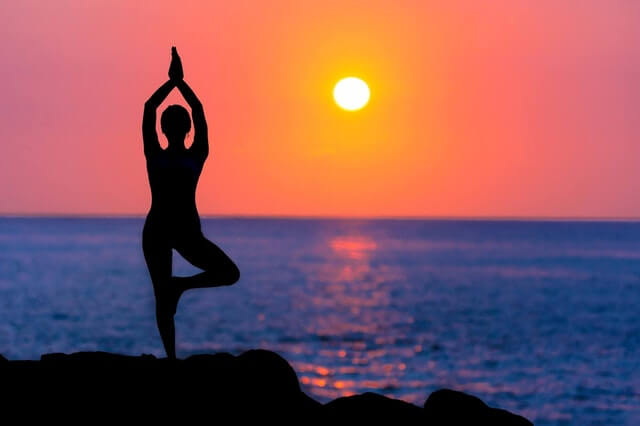This is the second part of a four part blog post on the standing forward fold yoga pose. If you haven’t yet, please go back and read part one.
Standing Forward Fold Yoga Pose Cue 2: Pelvis Sways behind the Heels and Feet
Most instructors cue “exhale forward hinging at the hips, not the waist.” It’s a great cue…if you know where the hip joints are located!
The side of the upper thigh (femur) is often mistakenly identified as the hip joint. Rather, the hip joint is formed where the thigh bone (femur) meets the three bones that make up the pelvis. The ilium, the ischium or sit bone, and the pubis. The two large pelvic blades (ilium) are easy to find, touch and sense movement. The “ball shaped knob” at the top of the femur sits in the “cup” of the ilium. This is the true hip joint and is located deep in the groin and unable to sense with your hands.
A better cue of hinging at the hips would be to hinge at the groin. An even better cue is to place the fingers at the groin and allow the Pelvis to sway behind heels. Without nodding the head, or bending the neck, the eyes should go from looking out at the horizon line to looking down at the floor. One should see a progressive appearance of the entire foot, then the ankles, and then the shin bones. Continuing the move, the knees should yield to a soft, subtle bend, NOT hyperextension. As the long torso or trunk naturally bends forward (a protective reflex to keep us from falling), one quickly sees the heels and then about three feet of flooring between the legs as the trunk, not just the head, is displaced forward.
Balance
Falling backward is not an option with this step of the standing forward fold yoga pose as long as the weight of the body is distributed simultaneously along the length of the heel through the longitudinal arches and balls of feet. The toe pads should still be disengaged. The aim is not to align the ankles, knees, and hip on top of one another like a pole sticking out of the ground at a 90º angle. Rather, the aim should look more like a pole that is angled 115º to the ground. This is imperative for beginning, middle age, and older students in a class and for people who have pain when bending forward.
Allowing the pelvis to sway behind the heel/feet, in turn, allows the base of the spine (sacrum) to disengage progressively from the lower back joints (lumbar facets) where years of poor movement and compression has caused osteoarthritis, facet degeneration, and lumbar foraminal narrowing or stenosis.
Interested in how yoga and somatic education can complement each other? Contact us today.

